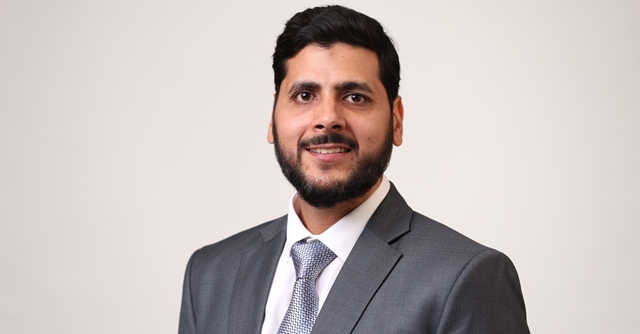
Rigorous testing, clear policies must before implementing AI: Shardul Amarchand Mangaldas & Co’s IT Director


The legal sector has historically been cautious about embracing new technologies, largely due to its reliance on traditional practices and the sensitivity surrounding client data. However, the landscape is shifting as digital transformation becomes not just a competitive edge but a necessity.
Irshad Saifi, the director of information technology and digitisation at one of India's leading corporate law firms Shardul Amarchand Mangaldas & Co (SAM & Co.) spoke to TechCircle in this context. Saifi delved into the experiences and strategies at SAM & Co on leveraging traditional and cutting-edge technologies to enhance productivity and efficiency. Edited excerpts:
How does the role of a CIO change across industries and sectors, in your case at a legal firm?

In my experience across various industries, I have observed that each of these follows a 70:30 rule when it comes to technology adoption. It means that 70% of the technology stack is consistent, covering basic infrastructure like servers, networks, and standard applications like enterprise resource planning (ERP) and human resource systems. The remaining 30% varies in deployment and use cases, depending on the industry and business’ specific needs. The same 70:30 principle applies to a law firm – 70% is the standard technology infrastructure and the remaining 30% focuses on leveraging niche technologies to boost lawyers' productivity and efficiency.
What are the various digital technology initiatives you have taken at SAM & Co?
When I joined the firm in 2020, during the onset of the pandemic, SAM & Co. was already at the forefront of technology. Thanks to our robust technological infrastructure, the transition to remote work took just a day. Our focus then shifted to refining processes and making them digital. The main challenge we faced was adapting to the shift in document management. Although the firm had a system in place, lawyers were still heavily reliant on printed documents. We also introduced advanced document clause companion tools, enabling our lawyers to store, retrieve, and proofread clauses using AI-driven technology. We also launched a knowledge management platform integrating all research and knowledge into a single portal, effectively becoming the “Google” for our firm’s knowledge resources. Additionally, we implemented several critical technologies, including an AI-based Learning Management System (LMS) for OnDemand training, a comprehensive HRMS for managing the entire employee lifecycle, and a customised client relationship management (CRM) system tailored for legal professionals. We migrated our ERP to D365, relaunched AI-based due diligence, and introduced advanced document proofreading solutions.

What has been the investment made towards such technology adoption? What is the roadmap for the way forward?
Approximately 20% of our IT budget is dedicated to transformational initiatives, ensuring continuous innovation. In addition, we allocate around 5% annually for R&D activities to explore emerging technologies. Our firm follows a long-term roadmap, with initiatives divided into four key areas. Legal Tech and Innovation focuses on enhancing lawyer efficiency and productivity through advanced tools like artificial intelligence (AI)-driven document automation, due diligence, conversational AI, and language translation. Firm-wide initiatives cover essential business applications, including ERP, HRMS, and CRM systems. Cybersecurity and compliance are crucial, as we prioritise client data protection through stringent policies, technologies, and adherence to regulatory standards. Finally, infrastructure and operations ensure smooth functioning and improved user experience across the firm.
AI-led initiatives play an important role in SAM & Co. innovation strategy. Beyond the opportunities it offers, what are the challenges with this technology?

Unfortunately, AI has not yet reached a stage where it can be fully relied upon, especially in critical fields like legal. It still exhibits biases and hallucinations, which limits its dependability. To leverage AI effectively, it's essential to first identify the problem and consider if AI is the best solution. Sometimes, simpler technologies like robotic process automation may be more reliable. Once a problem is defined, the next step is to thoroughly test and evaluate AI solutions to minimise bias and hallucinations, ensuring they meet the required standards. Rigorous testing is necessary before implementation, and clear policies must be established for AI use within the firm. These policies should outline when and how AI can be used, what tasks it is appropriate for, and the importance of manual review before incorporating AI-generated content, especially in legal documents. In our firm, we generally avoid using free/public versions of ChatGPT and other systems due to concerns about data privacy. Instead, we are focusing on developing custom AI models and establishing robust policies. Once these are in place, we’ll be better positioned to guide AI usage within the firm.
There is a proliferation in the number of legaltech firms in India and globally. What opportunities do these firms offer in terms of widespread tech adoption in this field?
There are significant opportunities in the legal sector, particularly with the rise of startups, including those from India. While legal tech has been slow to advance, tools like generative AI show promise in areas like tax issues, offering solutions for law firms, in-house counsels, and courts. However, many startups, especially those led by fresh graduates, mistakenly believe that building a product is enough. Success requires more than just product development; it involves understanding the problem, creating a strong narrative, and addressing critical factors like governance, cybersecurity, compliance, and market strategy.

